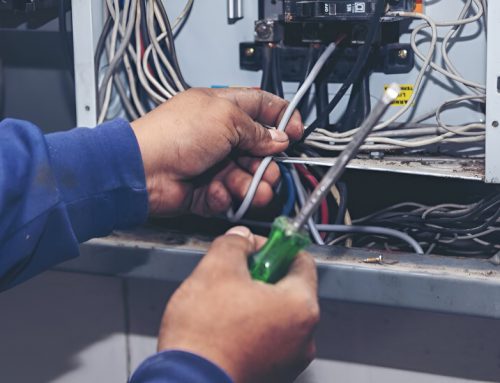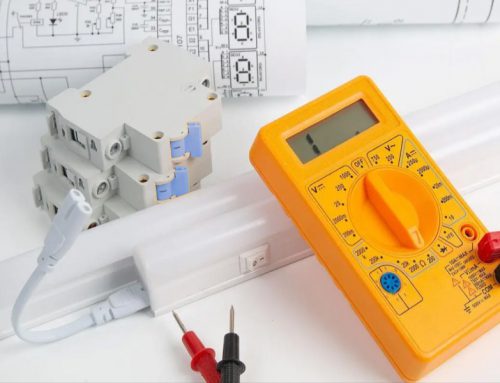Can I replace a 15 amp breaker with a 20 amp?
1. Introduction.
This article will introduce the function of circuit breakers and explain why circuit breakers are needed to protect the safety of the circuit. At the same time, the article will explore how to replace circuit breakers and analyze the similarities and differences between 15 amp and 20 amp circuit breakers, as well as their applicable scenarios. In order to better illustrate these issues, we will also analyze them based on actual cases.
2. Circuit breaker and current.
Q: What is a circuit breaker?
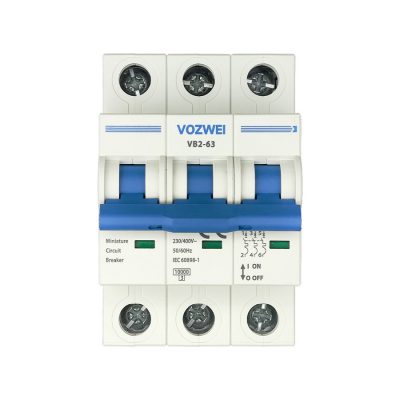
A: A circuit breaker is an electrical device used to protect circuits. It is mainly used to control and protect electrical equipment to prevent damage and safety risks caused by faults such as overload, short circuit, and earthquake. A circuit breaker usually consists of a switch mechanism and a set of contacts. When the current exceeds the set value or a fault occurs, the circuit breaker will automatically open the circuit, interrupt the flow of current, and prevent electrical equipment damage or circuit overload.
Circuit breakers can be divided into two categories based on their usage scenarios and rated currents: low-voltage circuit breakers and high-voltage circuit breakers. Low voltage circuit breakers are used in low-voltage electrical systems and are generally used in distribution boards or household appliances. Common types include air circuit breakers, fuses, etc; High voltage circuit breakers are mainly used in high-voltage electrical systems such as power transmission and substations to protect equipment and lines in power systems.
The main function of a circuit breaker is to quickly cut off the current in the event of a circuit malfunction, in order to protect electrical equipment and personal safety. It has multiple protection functions such as overload protection, short circuit protection, overvoltage protection, and can be operated manually or automatically. The selection of circuit breakers should be based on factors such as the load characteristics, rated current, and operating environment of the electrical system.
Q: What is current?

A: Current refers to the phenomenon of electric charges flowing in a circuit. When voltage is applied to the circuit, the charge is driven and begins to move, forming a current. Charge can be electrons, ions, or other charged particles.
The unit of current is the ampere (A), which represents the amount of charge passing through the cross-section of a conductor per second. For example, a current of 1 ampere means that the amount of charge passing through the cross-section of a conductor per second is 1 Coulomb (C). Usually, positive charges flow from the positive electrode to the negative electrode, while negative charges flow in the opposite direction. The direction of current is determined by the flow direction of positive charges.
According to Ohm’s Law, there is a definitive relationship between current, voltage, and resistance. Ohm’s Law states that the current (I) is equal to the voltage (V) divided by the resistance (R), which is expressed as I=V/R. This implies that for a given voltage, the greater the resistance, the smaller the current that flows; conversely, the smaller the resistance, the greater the current that flows.
Current plays an important role in circuits, as it is the foundation for the operation of electric motors, lighting, and electronic equipment. For different application requirements, it is necessary to reasonably control and adjust the size of the current.
Q: Why do we need to use a circuit breaker for current?
A: To answer this question, first of all, you need to understand why the current fluctuates?
(1). Changing power supply voltage: If the power supply voltage is unstable or fluctuates, the current will also fluctuate accordingly. This may be caused by changes in power system load, insufficient regulation of power supply voltage, or issues with the power supply itself.
(2). Load change: When the load in the circuit changes, the current will also fluctuate. For example, connecting or disconnecting electrical equipment, starting motors, and other operations can cause instantaneous changes in current.
(3). Resistance change: If the resistance value in the circuit changes, the current will also fluctuate accordingly. The change in resistance value may be caused by factors such as temperature changes, component aging, and poor contact.
(4). Instantaneous fault: When an instantaneous fault occurs in the circuit (such as short circuit, overload, etc.), the current will rapidly increase and return to normal after the fault is resolved.
(5). Nonlinear characteristics: Some electronic components or devices may have nonlinear characteristics during operation, leading to current fluctuations. For example, certain semiconductor devices may exhibit nonlinear effects in the saturation region.
What would be the impact if circuit breakers were not used next?
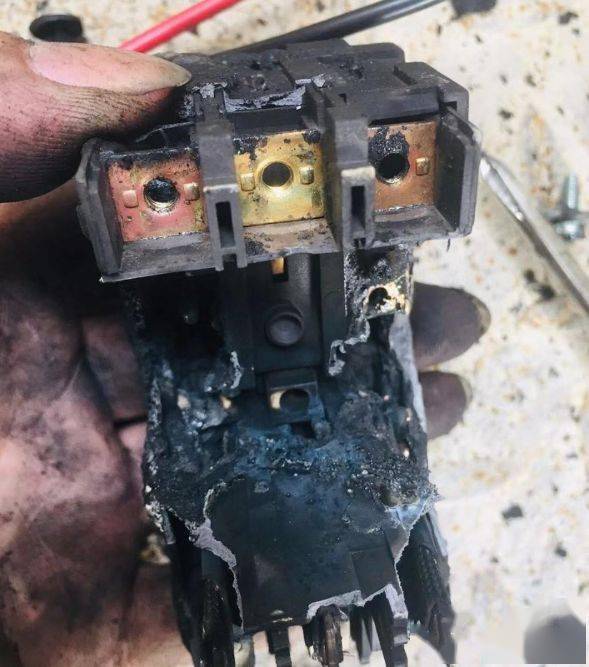
1. Overload burning of wires and equipment: When the current in the circuit exceeds the rated carrying capacity of the wires or equipment, the wires may overheat and burn, and the equipment may also be damaged or even cause a fire.
2. Welding of electrical contacts: In the power system, if the current is too high and there is no circuit breaker to cut off the current in a timely manner, it may cause the electrical contacts to continue to be worn by the arc, ultimately causing the electrical contacts to weld and unable to open and close the circuit normally.
3. Electric shock risk: If there is a fault in the circuit and there is no circuit breaker to cut off the current, such as when the human body comes into contact with exposed wires, high current can flow through the body, leading to electric shock injury and even life danger.
4. System instability: In some cases, excessive current may cause unstable power supply voltage, affect the normal operation of other equipment, and even cause faults in the entire power system.
Therefore, in order to ensure the safe operation of circuits and electrical equipment and prevent the occurrence of the above problems, the use of circuit breakers is very important. Circuit breakers can monitor changes in current and quickly cut off the circuit in case of abnormal current, preventing damage and danger caused by excessive current. It is an important protective device that can provide the safety and reliability of electrical systems.
3. 15 Amp and 20 Amp Circuit Breakers.

a. Specification differences
1. Carrying capacity: The amperage of a circuit breaker indicates its carrying capacity. The carrying capacity of a 15 ampere circuit breaker is 15 amperes, while a 20 ampere circuit breaker has a carrying capacity of 20 amperes. This means that a 20 ampere circuit breaker can withstand larger current loads.
2. Scope of application: Due to different carrying capacities, 15 ampere circuit breakers are suitable for occasions with low circuit loads, while 20 ampere circuit breakers are suitable for occasions with high circuit loads. When selecting a circuit breaker, it is necessary to make a reasonable selection based on the actual load situation.
3. Overall dimensions: There may be slight differences in the overall dimensions between 15 ampere circuit breakers and 20 ampere circuit breakers, but their overall dimensions are usually similar for installation in standard electrical equipment or electrical distribution boxes.
4. Price: Generally speaking, the price of a 20 ampere circuit breaker is slightly higher than that of a 15 ampere circuit breaker. This is because the 20 ampere circuit breaker has a higher load-bearing capacity, and the materials and design used may also be correspondingly improved, leading to an increase in cost.
b. Applicable scenarios. Below are some examples of 15A and 20A circuit breakers.
The scenarios applicable to 15 ampere circuit breakers include but are not limited to:
1. Home circuit: Used to protect low power load equipment such as home circuits, sockets, lighting, etc.
2. Small office or commercial premises: Used to protect small-scale electrical equipment and lighting systems.
3. Small factories or workshops: suitable for small equipment and lighting circuits with low electrical load requirements.
The scenarios applicable to 20 ampere circuit breakers include but are not limited to:
1. Commercial buildings: Used for the protection of main lines and important load equipment in power distribution systems.
2. Industrial production line: suitable for the protection of high-power load equipment and mechanical equipment.
3. Multi story residential buildings or large public places: used for branch circuits and general loads in distribution cabinets.
c. Safety standards
1. IEC 60898-1: This is the low-voltage circuit breaker standard issued by the International Electrotechnical Commission (IEC), applicable to low-voltage circuit breakers with a rated current not exceeding 125 amperes and a rated working voltage not exceeding 440 volts. This standard includes requirements for electrical performance, mechanical performance, and environmental conditions.
2. UL 489: This is a standard developed by Underwriters Laboratories in the United States, applicable to circuit breakers with rated voltage below 1000 volts and frequency not exceeding 60 hertz. UL 489 standard has detailed regulations on the electrical performance, insulation performance, and temperature characteristics of circuit breakers.
In addition to the international and industry standards mentioned above, different countries and regions may also have other relevant safety standards or regulations. When purchasing and using circuit breakers, it is recommended to follow local safety standards and choose certified products to ensure their quality and performance meet regulations, ensuring safe operation of the circuit and personal safety.
4. Case Study.
At this point, we first need to understand the risks of replacing a 15 amp circuit breaker with a 20 amp circuit breaker.
1. Overload risk. A 20 ampere circuit breaker has a higher rated current capacity compared to a 15 ampere circuit breaker. If the original circuit load approaches or exceeds the rated current of 15 amperes, replacing it with a 20 ampere circuit breaker may result in a risk of circuit overload. Overloading may cause safety issues such as overheating of wires, fire, and damage to equipment connected to the circuit.
2. Equipment damage. The rated current capacity of a 20 ampere circuit breaker is high. If the original equipment cannot withstand a current of 20 amperes, replacing it with a 20 ampere circuit breaker may cause damage to the equipment connected to the circuit. Equipment damage may lead to equipment malfunction, shutdown, and even additional maintenance or replacement costs.
3. Safety hazards. Replacing a 15 Amp circuit breaker with a 20 Amp circuit breaker may cause some safety issues. For example, if the original circuit design is not suitable for a rated current of 20 amperes, it may cause safety hazards such as wire overload and short circuits. These issues may increase the risk of fire and endanger personal and property safety.
Next comes the case study.
1. Success stories
Workshop equipment upgrade: When the power demand in the workshop increases, such as adding machinery and equipment, the existing circuit breakers may not be able to meet the demand. In this case, replacing a circuit breaker with a larger amperage can solve the problem of insufficient power.
Upgrading household electricity: With the increase of new household appliances and the extension of usage time, the original circuit load may exceed the rated load, leading to circuit breaker tripping. In this case, replacing a circuit breaker with a larger amperage can ensure the normal operation of the home circuit.
Renovation of commercial office buildings: When renovating or renovating commercial office buildings, it is likely to require an increase in electrical power. Replacing with a circuit breaker with a larger amperage can provide more power support and ensure that the circuit load meets demand.
2. Failure cases
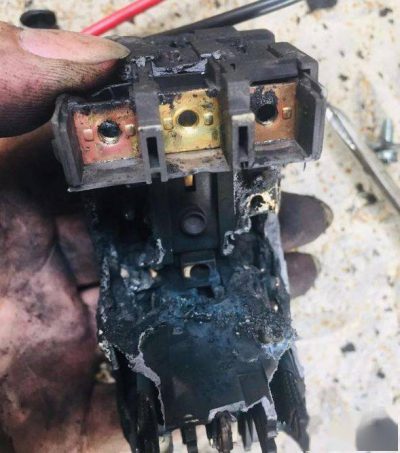
Wire overload: At a restaurant, staff replaced a 15 ampere circuit breaker with a 20 ampere circuit breaker to meet electricity demand. However, during the normal use of electrical appliances, the wires began to heat up and eventually caused a fire. After inspection, it was found that the electrical circuit was not fully evaluated, resulting in wire overload.
Equipment damage: In a school laboratory, in order to support more air conditioning equipment, a 20 ampere circuit breaker replaced the original 15 ampere circuit breaker. However, when using refrigerated cabinets and other equipment, these devices frequently malfunction. Finally, the investigation found that the existing electrical lines were unable to withstand the new power load, resulting in damage to the equipment connected to the circuit.
3. Lesson learned
Before replacing the circuit breaker, it is necessary to fully evaluate the circuit load and electrical equipment capacity to ensure that the new circuit breaker can meet the circuit load requirements.
If the circuit load exceeds the rated capacity of the new circuit breaker, it may cause safety issues such as equipment damage, wire overload, and fire. Therefore, a comprehensive electrical assessment must be conducted before replacing the circuit breaker.
To ensure safety, any replacement of circuit components must be carried out by professional electrical engineers and comply with relevant standards and specifications.
How to replace circuit breakers?
Conclusion
As an important component of the electrical system, circuit breakers bear the important responsibility of protecting circuits and equipment, preventing risks such as fire and electric shock. In some cases, it may be necessary to replace the circuit breaker with a larger amperage, such as increased circuit load, system upgrades, or for safety reasons. However, when replacing circuit breakers, we must be very careful and comply with safety regulations and regulations to ensure that the changes made not only do not increase any risks, but also have a positive impact on the electrical system.
Firstly, we need to emphasize the potential risks of replacing the circuit breaker with a larger amperage. On the one hand, if replaced with a circuit breaker that is too large, it will lead to energy waste and potential safety hazards; For example, an excessively large circuit breaker capacity may not be able to detect and cut off fault currents in a timely manner, thereby increasing the risk of fire and electric shock. On the other hand, if the replaced circuit breaker does not meet the requirements or is not fully tested and certified, it may violate laws and regulations, bringing additional safety risks.
Therefore, the importance of safety and compliance cannot be ignored. Before replacing the circuit breaker, we need to ensure compliance with local electrical regulations and standards, consult with professional electricians, and ensure that the circuit breaker has undergone sufficient testing and certification. In addition, unauthorized or unprofessional personnel replacement may also bring unnecessary risks, especially in high-voltage electrical equipment.
Finally, if you are considering replacing the circuit breaker with a higher amperage rating, please consult a professional electrician first and ensure compliance with local electrical regulations and standards before making any changes. It is important to understand the load requirements of the electrical system and choose the appropriate circuit breaker capacity, and to ensure that the circuit breakers used have been fully tested and certified. After replacement, regularly inspect the electrical system to ensure that everything is functioning properly. By complying with safety regulations and regulations, we can ensure the stability and safety of electrical systems while reducing repair and maintenance costs.
References
Appendix
Ampere: A unit of current that represents the rate of electron flow.
Circuit: The complete closed path through which a current can pass.

